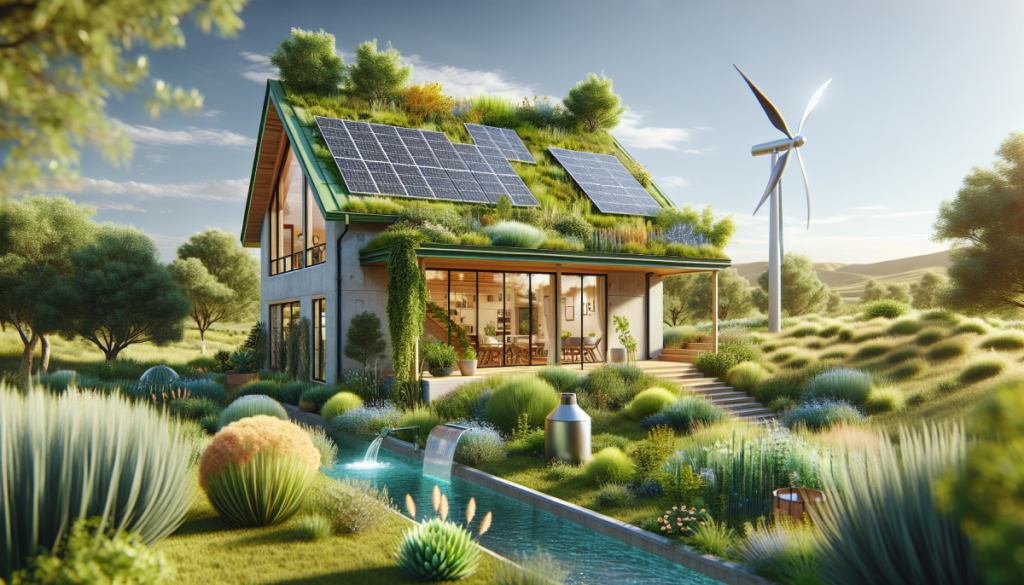Understanding Sustainable Building: Why It Matters for Oklahoma
Sustainable building is not just a trend; it is a necessary shift in how we approach construction and home design, especially in a state like Oklahoma. With its unique climate challenges, including extreme weather conditions and fluctuating temperatures, the need for eco-friendly homes has never been more pressing. Sustainable building practices aim to reduce the environmental impact of new constructions while promoting energy efficiency, resource conservation, and overall well-being for residents. In Oklahoma, where natural resources are abundant yet vulnerable, embracing sustainability can lead to a healthier environment and a more resilient community.
The importance of sustainable building in Oklahoma extends beyond individual homes. It encompasses the broader implications for local ecosystems, air quality, and even economic stability. By prioritizing sustainability, homeowners can contribute to a collective effort to combat climate change, preserve natural habitats, and reduce waste. Moreover, as the state faces increasing pressure from urbanization and population growth, sustainable practices can help ensure that future generations inherit a livable and thriving environment.
Key Sustainable Materials for Oklahoma Homes: What to Choose
When it comes to building eco-friendly homes in Oklahoma, the choice of materials is crucial. Selecting sustainable materials not only minimizes environmental impact but also enhances the durability and efficiency of the home. One of the most popular options is reclaimed wood, which reduces the demand for new lumber and adds character to any space. This material can be sourced from old barns, warehouses, or even furniture, giving new life to what would otherwise be waste.
Another excellent choice is bamboo, known for its rapid growth and strength. Unlike traditional hardwoods, bamboo can be harvested sustainably without harming the ecosystem. For insulation, consider using recycled denim or cellulose made from post-consumer paper products. These materials provide excellent thermal resistance while keeping waste out of landfills.
Additionally, incorporating low-VOC (volatile organic compounds) paints and finishes can significantly improve indoor air quality, making homes healthier for occupants. When selecting materials, it’s essential to look for certifications like FSC (Forest Stewardship Council) or Cradle to Cradle, which ensure responsible sourcing and manufacturing practices. By making informed choices, Oklahoma homeowners can create spaces that are not only beautiful but also environmentally responsible.
Energy Efficiency: Harnessing Oklahoma’s Natural Resources
Oklahoma is blessed with abundant natural resources, particularly sunlight and wind, which can be harnessed to create energy-efficient homes. Solar panels are becoming increasingly popular in the state, allowing homeowners to generate their own electricity and reduce reliance on fossil fuels. With the cost of solar technology decreasing, many Oklahomans are finding that investing in solar energy is not only good for the planet but also for their wallets.
Wind energy is another significant resource for Oklahomans. The state ranks among the top in the nation for wind energy production, and homeowners can take advantage of this by considering small wind turbines for their properties. These systems can provide substantial energy savings and even generate income through net metering programs.
In addition to renewable energy sources, energy-efficient appliances and smart home technologies can significantly reduce energy consumption. From programmable thermostats to Energy Star-rated appliances, these innovations allow homeowners to monitor and manage their energy use effectively. By embracing energy efficiency, Oklahomans can lower their utility bills while contributing to a more sustainable future.
Water Conservation Techniques: Building for a Sustainable Future
Water conservation is a critical aspect of sustainable building, particularly in a state that experiences drought conditions. Implementing water-efficient fixtures, such as low-flow faucets, dual-flush toilets, and water-saving showerheads, can drastically reduce water usage without sacrificing comfort. These simple changes can lead to significant savings on water bills and contribute to the preservation of this vital resource.
Incorporating rainwater harvesting systems is another effective strategy. By collecting rainwater from roofs and directing it to storage tanks, homeowners can use this water for irrigation, flushing toilets, or even laundry. This not only reduces the demand on municipal water supplies but also helps manage stormwater runoff, which can lead to erosion and water pollution.
Landscaping with native plants is also a sustainable practice that promotes water conservation. Native plants are adapted to the local climate and require less water and maintenance than non-native species. By creating a drought-resistant landscape, homeowners can enjoy a beautiful yard while minimizing their water usage. Together, these techniques can significantly enhance the sustainability of homes in Oklahoma, ensuring a secure water future for all.
The Long-Term Benefits of Sustainable Building: Saving Money and the Planet
Investing in sustainable building practices offers numerous long-term benefits that extend beyond immediate cost savings. While the initial investment may be higher, the return on investment can be substantial over time. Energy-efficient homes typically experience lower utility bills, which can lead to significant savings over the years. Additionally, many sustainable materials are more durable, reducing the need for repairs and replacements.
Moreover, homes built with sustainability in mind often have higher resale values. As more buyers prioritize eco-friendly features, homes that incorporate sustainable practices can stand out in the market. This trend not only benefits individual homeowners but also contributes to a broader shift towards sustainable living within communities.
Finally, embracing sustainability is an investment in the future of our planet. By reducing carbon footprints, conserving resources, and promoting healthier living environments, Oklahomans can play a vital role in combating climate change. The collective impact of individual actions can lead to significant environmental improvements, ensuring that future generations inherit a world that is not only livable but thriving. In this way, building eco-friendly homes in Oklahoma is not just a personal choice; it is a commitment to a sustainable future for all.

